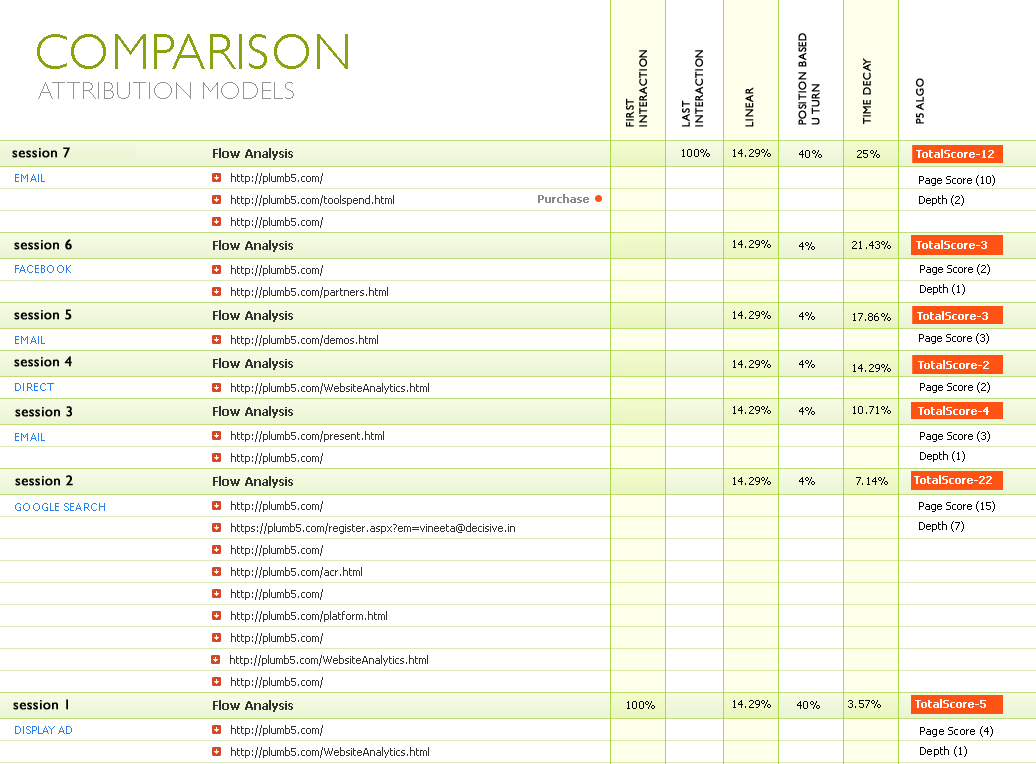Definition:
The purpose of marketing attribution is to quantify the influence each advertising impression has on a consumer’s decision to make a purchase decision, or convert.
Attribution is the process of identifying a set of user actions (“events”) that contribute in some manner to a desired outcome, and then assigning a value to each of these events. Marketing attribution provides a level of understanding of what combination of events influence individuals to engage in a desired behavior, typically referred to as a conversion.[Src: http://en.wikipedia.org/wiki/Attribution_(marketing)]
Attributing value to events such as clicks, allows marketers to optimize media spend for conversions and compare the value of different marketing channels, including paid and organic search, email, affiliate marketing, display ads, social media and more
Current Challenges
1. Since channels include Ad sources, organic search, mail and social sites, data identification is not consistent across all sources.
2. Currently models are applied based on total conversion irrespective of user’s repeat purchase. Since data is not user-centric, it is hard to differentiate first purchase from repeat purchases
3. Most models practiced today are either Single Source or Fractional Attribution models and both have their own limitation. Algorithmic Attribution Model assigns conversion credit across all touch points preceding the conversion, using automated computation to decide where credit is due
Marketing Attribution with Plumb5
Plumb5, with its customer-centric integrated platform, solves all the current challenges of arriving at an accurate attribution model
Addressing Data identification
Plumb5 scripts monitor all incoming traffic irrespective of the channels (even email) and records and assigns value to each interaction, for every individual users. Since data is stacked by user, data is filtered for users who have successful transactions. This helps us identify all sources, that these users have visited from, that has contributed to the purchase goals
Identifying First Purchase.
Plumb5 integrated with your store in order to tag transaction behavior of each individual user. This helps in identifying the purchase touch-points of the user.
Understanding the first purchase touch-point is crucial, because all sources contributing to subsequent purchases are attributed differently, to understand influencing sources to conduct effective retention campaigns
Algorithmic Attribution.
With Plumb5, you can set scores for behavior parameters like page depth, page type, event type, time spend, frequency. This allows in assigning values for sessions that involved high interactions which could be influencing the purchase decisions. This helps us to identify effective touch-points irrespective of their occurance
For example: Lets look at the following example

For demonstrating purpose, notice that we have added scores for page type and page depth, just to illustrate the difference in weights.
If you notice in the above report, the second touch-point which contributed considerably to the purchase behavior was completely neglected or under scored by the other models. Scoring each events and assist pages helps us in identifying the influencing source, which gets hidden when we apply single source or fractional attribution models
P5 Algo is the name given to the model which uses a proprietary algorithm used in attributing sources, which contributes to first purchase (Acquisition cycle)
